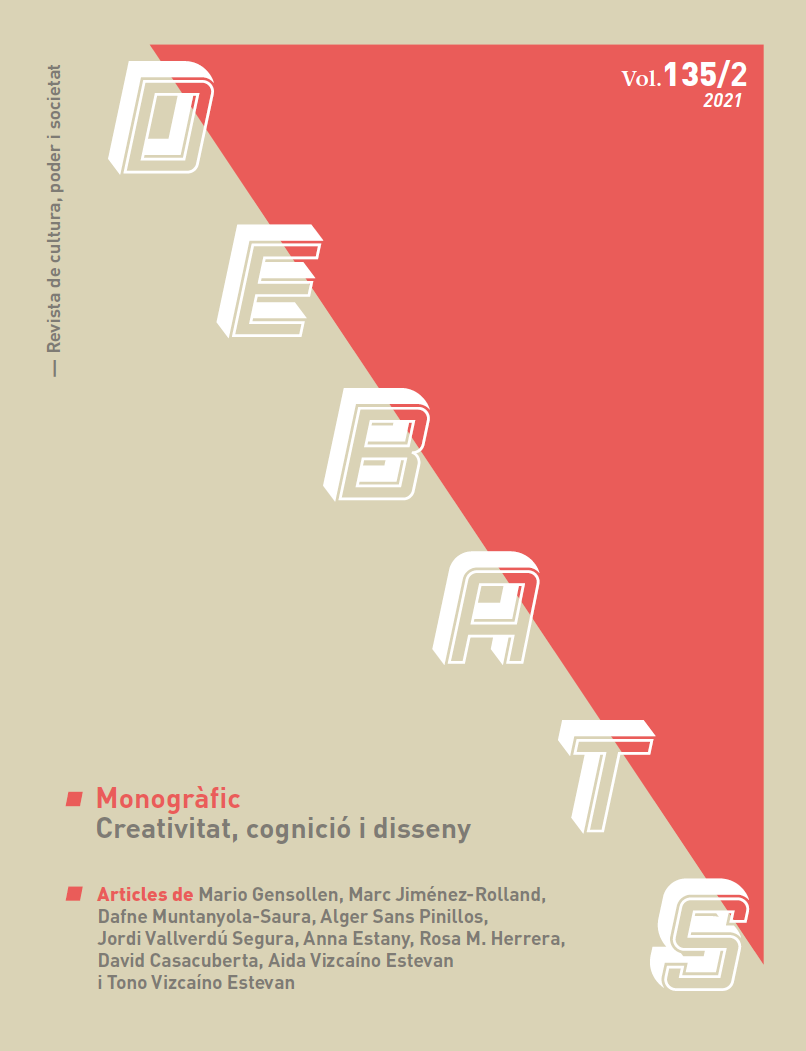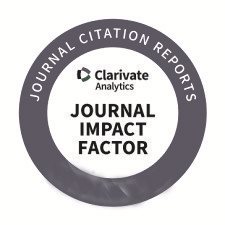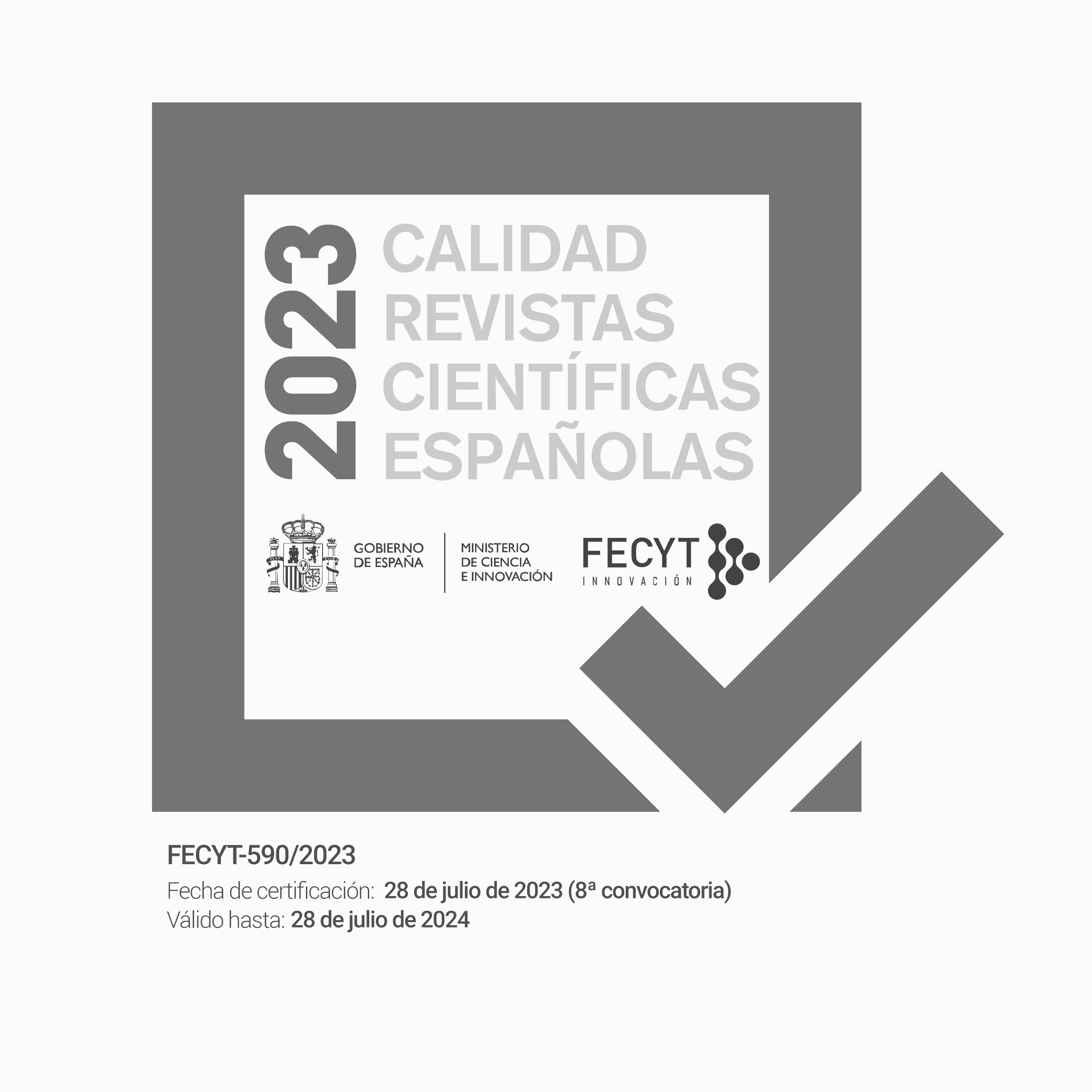Creatividad, humor y cognición
DOI:
https://doi.org/10.28939/iam.debats-135-2.1Paraules clau:
linguistic humor, creative humor, incongruity-resolution, relevance theory.Resum
Este artículo explora algunos aspectos del estudio científico de la creatividad centrándose en la creación de humor lingüístico intencionado. Sostenemos que este tipo de creatividad puede explicarse dentro de un enfoque cognitivo influyente, pero que dicho marco no es una receta para producir ejemplos novedosos de humor, e incluso puede excluirlos. Comenzaremos identificando tres
grandes problemas que surgen al tratar de precisar los rasgos centrales de la creatividad y algunas de las formas adoptadas por los estudios cognitivos en esta búsqueda. Luego consideraremos a qué llamamos «humor creativo», que exhibe las características centrales de la creatividad antes mencionada. A continuación exploraremos cómo un enfoque cognitivo clave para la comunicación
humana puede explicar el humor creativo. Por último, extraeremos conclusiones y destacaremos las limitaciones de los enfoques cognitivos para entender la creatividad.
Descàrregues
Referències
Amir, O., and Biederman, I. (2016). The Neural Correlates of Humor Creativity. Front. Hum. Neurosci, 10, 597.
Arieti, S. (1976). Creativity: The Magic Synthesis. New York: Basic Books.
Beermann, U., and Ruch, W. (2009). How Virtuous is Humor? Evidence from Everyday Behavior. Humor: International Journal of Humor Research, 22(4), 395-417.
Bermúdez, J. (2014). Cognitive Science. An Introduction to the Science of Mind. (2nd ed.). Cambridge: Cambridge University Press.
Bermúdez, J. (2005). Philosophy of Psychology. A Contemporary Introduction. New York: Routledge.
Boden, M. (2004). The Creative Mind: Myths and Mechanisms. London: Routledge.
Boden, M. (2009). Creativity: How Does It Work? In M. Krausz, D. Dutton and K. Bardsley (eds.), The Idea of Creativity (pp. 237-250). Leiden: Brill.
Boden, M. (2016). AI: Its Nature and Future. Oxford: Oxford University Press.
Carroll, N. (2014). Humour: A Very Short Introduction. Oxford: Oxford University Press.
Chan, Y-C., Chen, H-C., and Lavallee, J. (2013). The Impact of Gelotophobia, Gelotophilia and Katagelasticism on Creativity. Humor: International Journal of Humor Research, 26(4), 609-628.
Cropley, A. (2011). Definitions of Creativity. In M. Runco and S. Pritzker (eds.), Encyclopedia of Creativity (2nd ed.) (pp. 511-524). San Diego: Academic Press.
Curcó, C. (1995). Some Observations on the Pragmatics of Humorous Interpretations: A Relevance-Theoretic Approach. UCL Working Papers in Linguistics, 7, 27-47.
Curcó, C. 1997b. The Pragmatics of Humorous Interpretations: A Relevance-Theoretic Account. Unpublished PhD. Dissertation. London: University College London.
Davies, G., and Subkoviak, M. (1975). Multidimensional Analysis of a Personality-Based Test of Creative Potential. Journal of Educational Measurement, 12(1), 37-43.
Dietrich, A., and Kanso, R. (2010). A Review of EEG, ERP, and Neuroimaging Studies of Creativity and Insight. Psychological Bulletin, 136, 822-848.
Estany, A., and Herrera, R. (2016). Innovación en el saber teórico y práctico. London: College Publications.
Fauconnier, G., and Turner, M. (2002). The Way We Think. Oxford: Basic Books.
Getzels, J., and Jackson, P. (1962). Creativity and Intelligence. New York: Wiley.
Gibson, J. (2019). An Introduction to the Psychology of Humor. New York: Routledge.
Gordon, W. (1962). Synectics. New York: Harper.
Hausman, C. (1979). Philosophy of Creativity. Ultimate Reality and Meaning, 2, 143-162.
Hausman, C. (1976). Introduction: The Creativity Question. In C. Hausman and A. Rothenberg, The Creativity Question (pp. 3-26). Durham: Duke University Press.
Hausman, C. (1984). A Discourse on Novelty and Creation. Albany: SUNY Press.
Hobbes, T. (1651). Leviathan. Cambridge: Cambridge University Press, 1991.
Hong, N. (2010). Mow’em All Down Grandma: The “Weapon” of Humor in Two Danish World War II Occupation Scrapbooks. Humor: International Journal of Humor Research, 23(1), 27-64.
Howard-Jones, P., Blakemore, S., Samuel, E., Summers, I., and Claxton, G. (2005). Semantic Divergence and Creative Story Generation: An fMRI Investigation. Cogn. Brain Res., 25, 240-250.
Hurley, M., Dennett, D., and Adams, R. (2011). Inside Jokes: Using Humor to Reverse-Engineer the Mind. Cambridge: MIT Press.
Jodłowiec, M. (1991). What Makes Jokes Tick? UCL Working Papers in Linguistics, 3, 241-253.
Kivy, P. (2001). The Possessor and the Possessed. New Haven: Yale University Press.
Kellner, R., and Benedek, M. (2016). The Role of Creative Potential and Intelligence for Humor Production. Psychology of Aesthetics, Creativity and the Arts. Advance online publication.
Koestler, A. (1964). The Act of Creation. London: Hutchinson.
Kronfeldner, M. (2009). Creativity Naturalized. The Philosophical Quarterly, 237(59), 577-592.
Limb, C., and Braun, A. (2008). Neural Substrates of Spontaneous Musical Performance: An fMRI Study of Jazz Improvisation. PLoS ONE, 2(3), e1679.
Mankoff, R. (2009). Foreword. In J. Morreall, Comic Relief: A Comprehensive Philosophy of Humor (pp. ix-x). Malden: Wiley-Blackwell.
Maslow, A. (1971). The Father Reaches of Human Nature. New York: Viking Press.
Morreall, J. (2009). Comic Relief: A Comprehensive Philosophy of Humor. Malden: Wiley-Blackwell.
Murdock, M., and Ganim, R. (1993). Creativity and Humor: Integration and Incongruity. Journal of Creative Behavior, 1(27), 57-70.
O’Quin, K., and Derks, P. (2011) In M. Runco and S. Pritzker (eds.), Encyclopedia of Creativity (2nd ed.) (p. 511-524). San Diego: Academic Press.
Papineau, D. (2006). Naturalist Theories of Meaning. In E. Lepore and B. Smith (eds.), The Oxford Handbook of Philosophy of Language (pp. 175-188). Oxford: Clarendon Press.
Rouff, L. (1975). Creativity and Sense of Humor. Psychological Reports, 37, 1022.
Scruton, R. (1982). Laughter. Proceedings of the Aristotelian Society, 56, 197-212.
Sperber, D., and Wilson, D. (1987). Précis of Relevance: Communication and Cognition. Behavioral and Brain Sciences, 10, 697-754.
Sperber, D., and Wilson, D. (1995). Relevance: Communication and Cognition (2nd ed.). Oxford: Blackwell.
Sprevak, M. (2016). Philosophy of the Psychological and Cognitive Sciences. In P. Humphreys (ed.), The Oxford Handbook for the Philosophy of Science (pp. 92-114). New York: Oxford University Press.
Stokes, D. (2007). Incubated Cognition and Creativity. Journal of Consciousness Studies, 14, 83-100.
Stokes, D., and Paul, E. (2016). Naturalistic Approaches to Creativity. In J. Sytsma and W. Buckwalter (eds.), A Companion to Experimental Philosophy (pp. 318- 333). Malden: Wiley-Blackwell.
Thagard, P., and Stewart, T. (2011). The AHA! Experience: Creativity Through Emergent Binding in Neural Networks. Cognitive Science, 35, 1-33.
Torrance, P. (1966). Torrance Tests of Creative Thinking. Princeton: Personnel Press.
Treadwell, Y. (1970). Humor and Creativity. Psychological Reports, 26, 55-58.
Wilson, D., and Sperber, D. (2004). Relevance Theory. In L. Horn and G. Ward (eds.), The Handbook of Pragmatics (pp. 607-632). Oxford: Blackwell.
Wyer, R., and Collins, J. (1992). A Theory of Humor Elicitation. Psychological Review, 99(4), 663-688.
Yus, F. (2016). Humour and Relevance. Amsterdam: John Benjamins.
Yus, F. (2017). Relevance-Theoretic Treatments of Humor. In S. Attardo (ed.), The Routledge Handbook of Language and Humor (pp. 189-203). New York: Routledge.
Ziv, A. (1976). Facilitating Effects of Humor on Creativity. Journal of Educational Psychology, 68(3), 318-322.
Descàrregues
Publicades
Com citar
Número
Secció
Llicència
Sense perjudici del que disposa l'article 52 de la Llei 22/1987 d'11 de novembre de Propietat Intel·lectual, BOE del 17 de novembre de 1987, i conforme a aquest, els/les autors o autores cedeix/en a títol gratuït els seus drets d'edició, publicació, distribució i venda sobre l'article, per tal que siga publicat a Debats. Revista sobre cultura, poder i societat.
Debats. Revista de cultura, poder i societat es publica sota el sistema de llicències Creative Commons segons la modalitat “Reconeixement – NoComercial (by-nc): Es permet la generació d’obres derivades sempre que no se’n faça un ús comercial. Tampoc no es pot fer servir l’obra original amb finalitats comercials”.
Així, quan l’autor/a envia la seva col·laboració, accepta explícitament aquesta cessió de drets d’edició i de publicació. Igualment autoritza Debats. Revista de cultura, poder i societat la inclusió del seu treball en un fascicle de la revista perquè es puga distribuir i vendre.











